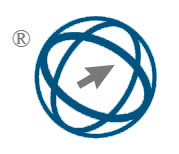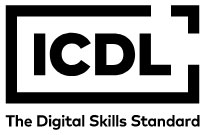Optimizing Swarm Intelligence: A Comprehensive Analysis of Mutation-Based Enhancements
Abstract
Full Text:
PDFReferences
Mykel J. Konchenderfer and T. A. Wheeler, Algorithms For Optimization. London: MIT Press, 2019.
A. Naik and S. C. Satapathy, “A comparative study of social group optimization with a few recent optimization algorithms,” Complex & Intelligent Systems, vol. 7, no. 1, pp. 249–295, 2021, doi: 10.1007/s40747-020-00189-6.
R. Hinterding, H. Gielewski, and T. Peachey, “The Nature of Mutation in Genetic Algorithms.,” Proceedings of the Sixth International Conference on Genetic Algorithms, pp. 65–72, 1995, [Online]. Available: http://pdf.aminer.org/000/310/686/the_nature_of_mutation_in_genetic_algorithms.pdf
M. Sharma and J. K. Chhabra, “Sustainable automatic data clustering using hybrid PSO algorithm with mutation,” Sustainable Computing: Informatics and Systems, vol. 23, pp. 144–157, Sep. 2019, doi: 10.1016/j.suscom.2019.07.009.
S. Rani, B. Suri, and R. Goyal, “On the effectiveness of using elitist genetic algorithm in mutation testing,” Symmetry (Basel), vol. 11, no. 9, 2019, doi: 10.3390/sym11091145.
A. Hassanat, K. Almohammadi, E. Alkafaween, E. Abunawas, A. Hammouri, and V. B. S. Prasath, “Choosing mutation and crossover ratios for genetic algorithms-a review with a new dynamic approach,” Information (Switzerland), vol. 10, no. 12, 2019, doi: 10.3390/info10120390.
C. Audet and W. Hare, “Genetic Algorithms,” Springer Series in Operations Research and Financial Engineering, pp. 57–73, 2017, doi: 10.1007/978-3-319-68913-5_4.
T. M. Shami, A. A. El-Saleh, M. Alswaitti, Q. Al-Tashi, M. A. Summakieh, and S. Mirjalili, “Particle Swarm Optimization: A Comprehensive Survey,” IEEE Access, vol. 10, pp. 10031–10061, 2022, doi: 10.1109/ACCESS.2022.3142859.
E. H. Houssein, A. G. Gad, K. Hussain, and P. N. Suganthan, “Major Advances in Particle Swarm Optimization: Theory, Analysis, and Application,” Swarm Evol Comput, vol. 63, Jun. 2021, doi: 10.1016/j.swevo.2021.100868.
X. Wang, P. Henshaw, and D. S. K. Ting, “Exergoeconomic analysis for a thermoelectric generator using mutation particle swarm optimization (M-PSO),” Appl Energy, vol. 294, Jul. 2021, doi: 10.1016/j.apenergy.2021.116952.
B. Jana, S. Mitra, and S. Acharyya, “Repository and Mutation based Particle Swarm Optimization (RMPSO): A new PSO variant applied to reconstruction of Gene Regulatory Network,” Applied Soft Computing Journal, vol. 74, pp. 330–355, Jan. 2019, doi: 10.1016/j.asoc.2018.09.027.
R. R. Ihsan, S. M. Almufti, B. M. S. Ormani, R. R. Asaad, and R. B. Marqas, “A Survey on Cat Swarm Optimization Algorithm,” Asian Journal of Research in Computer Science, pp. 22–32, Jun. 2021, doi: 10.9734/ajrcos/2021/v10i230237.
A. M. Ahmed, T. A. Rashid, and S. A. M. Saeed, “Cat Swarm Optimization Algorithm: A Survey and Performance Evaluation,” Computational Intelligence and Neuroscience, vol. 2020. Hindawi Limited, 2020. doi: 10.1155/2020/4854895.
L. Pappula and D. Ghosh, “Cat swarm optimization with normal mutation for fast convergence of multimodal functions,” Applied Soft Computing Journal, vol. 66, pp. 473–491, May 2018, doi: 10.1016/j.asoc.2018.02.012.
Y. Meraihi, A. B. Gabis, S. Mirjalili, and A. Ramdane-Cherif, “Grasshopper optimization algorithm: Theory, variants, and applications,” IEEE Access, vol. 9, pp. 50001–50024, 2021, doi: 10.1109/ACCESS.2021.3067597.
L. Abualigah and A. Diabat, “A comprehensive survey of the Grasshopper optimization algorithm: results, variants, and applications,” Neural Computing and Applications, vol. 32, no. 19. Springer Science and Business Media Deutschland GmbH, pp. 15533–15556, Oct. 01, 2020. doi: 10.1007/s00521-020-04789-8.
S. Zhao, P. Wang, A. A. Heidari, X. Zhao, C. Ma, and H. Chen, “An enhanced Cauchy mutation grasshopper optimization with trigonometric substitution: engineering design and feature selection,” Eng Comput, Dec. 2021, doi: 10.1007/s00366-021-01448-x.
S. A. A. Ghaleb, M. Mohamad, E. F. H. Syed Abdullah, and W. A. H. M. Ghanem, “Integrating mutation operator into grasshopper optimization algorithm for global optimization,” Soft comput, vol. 25, no. 13, pp. 8281–8324, Jul. 2021, doi: 10.1007/s00500-021-05752-y.
B. N. Silva and K. Han, “Mutation operator integrated ant colony optimization based domestic appliance scheduling for lucrative demand side management,” Future Generation Computer Systems, vol. 100, pp. 557–568, 2019, doi: 10.1016/j.future.2019.05.052.
J. H. Tam, Z. C. Ong, Z. Ismail, B. C. Ang, and S. Y. Khoo, “A new hybrid GA−ACO−PSO algorithm for solving various engineering design problems,” Int J Comput Math, vol. 96, no. 5, pp. 883–919, 2019, doi: 10.1080/00207160.2018.1463438.
D. M. Chitty, “Partial-ACO as a GA mutation operator applied to TSP instances,” GECCO 2021 Companion - Proceedings of the 2021 Genetic and Evolutionary Computation Conference Companion, pp. 69–70, 2021, doi: 10.1145/3449726.3459424.
H. Li and W. Li, “Enhanced artificial bee Colony algorithm and its application in multi-threshold image feature retrieval,” Multimed Tools Appl, vol. 78, no. 7, pp. 8683–8698, 2019, doi: 10.1007/s11042-018-6066-6.
F. Ye, Z. Zhou, H. Tian, Q. Sun, Y. Li, and T. Jiang, “Intelligent Anti-Jamming Decision Method Based on the Mutation Search Artificial Bee Colony Algorithm for Wireless Systems,” 2019 USNC-URSI Radio Science Meeting (Joint with AP-S Symposium), USNC-URSI 2019 - Proceedings, pp. 27–28, 2019, doi: 10.1109/USNC-URSI.2019.8861785.
G. E. Yuliastuti, A. M. Rizki, W. F. Mahmudy, and I. P. Tama, “Optimization of Multi-Product Aggregate Production Planning using Hybrid Simulated Annealing and Adaptive Genetic Algorithm,” International Journal of Advanced Computer Science and Applications, vol. 10, no. 11, pp. 484–489, 2019, doi: 10.14569/IJACSA.2019.0101167.
B. Jana, S. Mitra, and S. Acharyya, “Repository and Mutation based Particle Swarm Optimization (RMPSO): A new PSO variant applied to reconstruction of Gene Regulatory Network,” Applied Soft Computing Journal, vol. 74, pp. 330–355, Jan. 2019, doi: 10.1016/j.asoc.2018.09.027
DOI: https://doi.org/10.31449/inf.v49i15.5524

This work is licensed under a Creative Commons Attribution 3.0 License.









